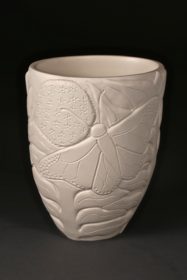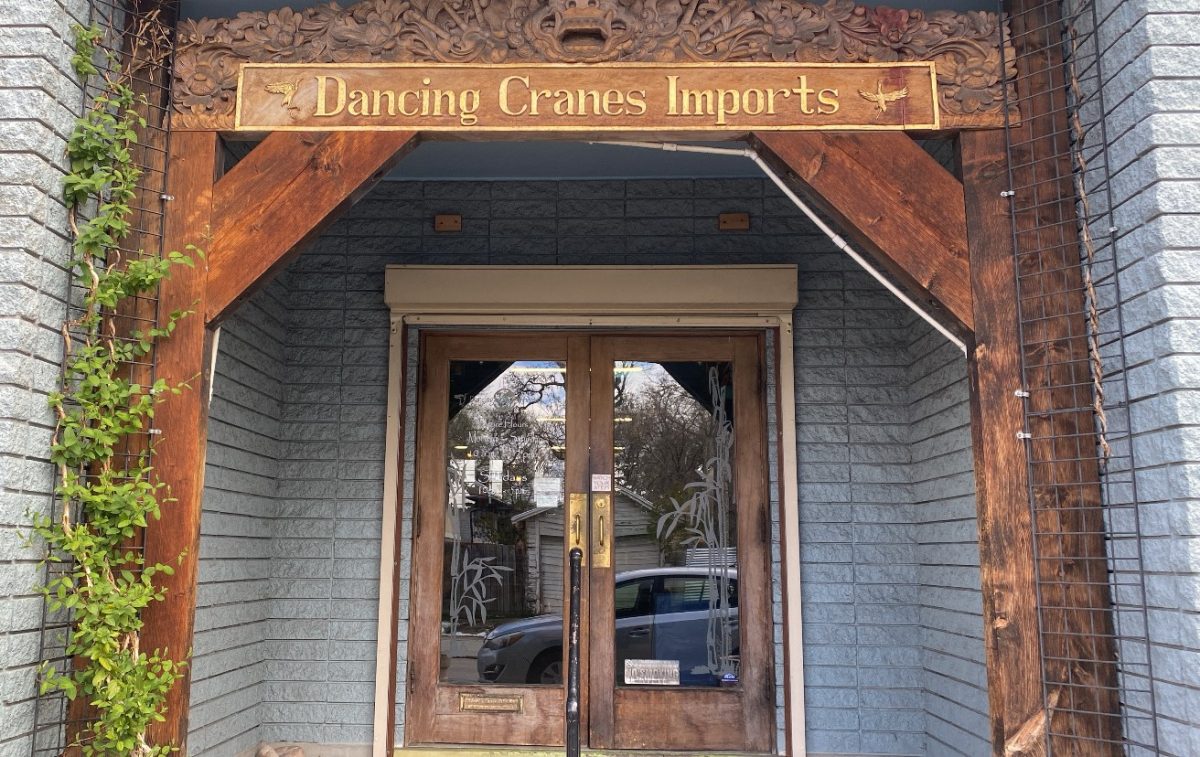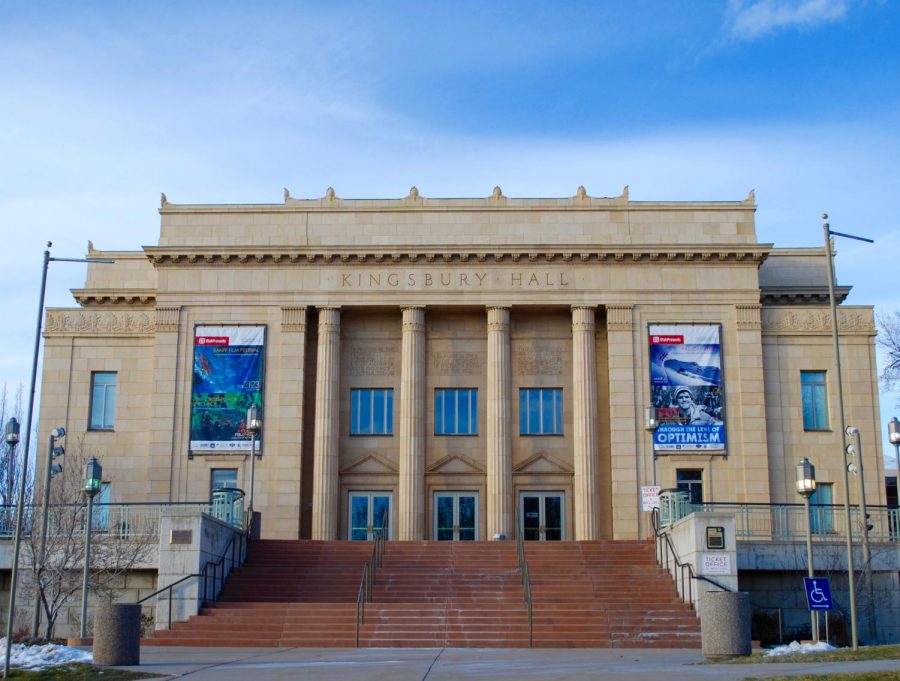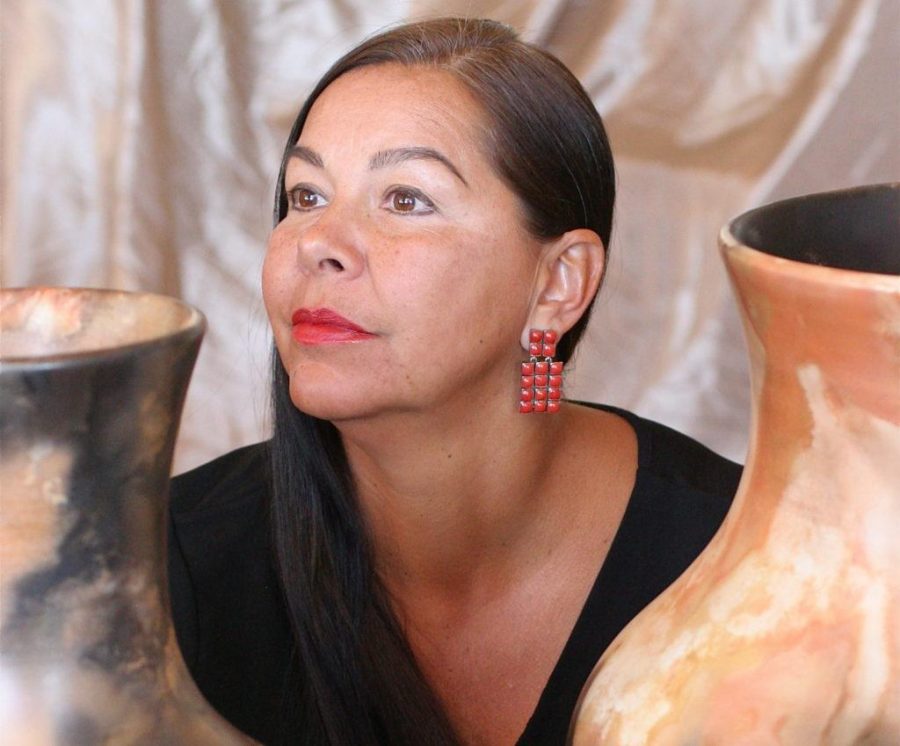Kickapoo and Potawatomi Nations clay and bronze artist, Pahponee, was among 22 featured artists at the Natural History Museum’s fourth annual Indian Art Market this past month. The market’s goal was to inform the local community about Native American art and culture – and Pahponee was a great addition, helping extend knowledge of her ancestral Great Lakes art.
Her inspiration to learn about pottery came from a first-hand encounter with an animal sacred to her native people, the white buffalo. According to Pahponee, the experience was life-changing as she later dreamt of a white buffalo pottery vessel — an image she then sought, and continues to seek, to recreate.
“My goal has always been to create one-of-a-kind pieces that tell a story,” she said. “They are often about my family, friends and traditions of the past, but I also like to ‘talk’ about things that have happened to me.”
 As the only current potter of the Great Lakes-area tribe, she continues to practice many Northeastern Woodland traditions. She uses her native Kickapoo name “Pahponee,” which translates to “Snow Woman,” to leave remnants of her tribe in each of her pots.
As the only current potter of the Great Lakes-area tribe, she continues to practice many Northeastern Woodland traditions. She uses her native Kickapoo name “Pahponee,” which translates to “Snow Woman,” to leave remnants of her tribe in each of her pots.
“When you say my name, you’re speaking our language,” she said. “I’ve always tried to make an effort to sign my pots using my Kickapoo name. I do that out of respect for where I come from and my elders asking me to do it that way.”
For Pahponee, language is vital to understanding her culture. “It creates an unusual statement in this modern day and age that people still speak our language. It’s to keep the understanding of who we are and where we come from. All Native people really have sort of a dual-citizenship – we’re born with an English name, birth certificate and social security card, but we’re also members of our own tribe and have recognition within our own nation outside of the ‘public world.’ When I know my work could be entering the public, I always make sure I put my name on there and sign it.”
Pahponee has participated in many different art shows and markets and has won several awards. But the best experiences for her, come from sharing education of her native culture, especially in places where many don’t know much about it.
“Especially in places such as Utah, people are more accustomed to southwestern tribes, whether it’s the Utes, Navajo or Hopi,” she said. “There’s more of a southwestern knowledge of pottery, so when I came to do the [Indian Art Market], it was interesting for me to get feedback from the show attendees. The people who come to support the show usually say, ‘I’ve never seen anything like this before. We can tell it isn’t from around here.’” Pahponee appreciates such comments. “That’s a good observation, because it’s true,” she said. “It makes for great education when I come to do a show in the West because many people have never seen anything like my work before.”
 Her pottery can cover anything from old-style to contemporary pottery and, in some of her more traditional pots, she uses an ancient firing technique unique to her native tribe.
Her pottery can cover anything from old-style to contemporary pottery and, in some of her more traditional pots, she uses an ancient firing technique unique to her native tribe.
“I make a point to [fire] in the ancestral way my people fired,” she said. “It’s not really done worldwide or even nationwide. It’s unique to Great Lakes woodland-style of firing with our crucial main combustible – buffalo dung.”
In the 19th century, over-hunting caused a significant decline in the North American bison population. According to the International Union for Conservation of Nature, the numbers have since partially recovered, but the species is currently listed as “near threatened” on the Union’s Red List of Threatened Species, due to the species’ dependence on “ongoing conservation programs, a very limited number of viable populations (five), and small populations.”
“They were almost slaughtered to annihilation,” Pahponee said, “and if that last buffalo passed away, the process I do in firing my pots would also be extinct because it could not be performed without the living buffalo’s contribution.” Until then, though, she’s going to keep on doing her work. “It’s a very unique thing to be able to do [my pottery] in the 21st century. I’m able to show the world, through my work, that I can do something in the 21st that was done back in the 17th century. I like that idea – that some things are very timeless. They’re timeless because all the animals, places and persons that make it happen are still alive today. I never know what I’m going to get from that fire. It’s different every single time.”
According to Pahponee, markets such as the NHMU’s Indian Art Market this month are a great way to help preserve Native American culture.
“When there’s a market, like the one we just did, it creates a connection between the living-working artist and the public,” she said. “It’s impossible to do that in any other way. There’s over 500 Indian nations on the continent – each tribe unique, with different languages and customs. Utah has great indigenous history and the [NHMU] has really expanded on it. To have artists like myself, who’s a guest to the area, or any artist not from Utah come in and be able to present their work in that area, helps people realize this continent has a tremendous amount of indigenous history no matter where you go. If you leave the state of Utah to visit somewhere, you’re still walking on Indian land. [With art markets] we have the ability to take that education to a greater level – you’re not just reading about [Native American culture] in a book, you’re talking to someone in person. I see great value in that.”
@noteastbuterin










